|
|
The Indianapolis 500-Mile Race is the world’s largest one-day sporting event with more than 400,000 spectators. A blaring roar resounds as the 33 race cars take off in pursuit of the checkered flag. More than 2,500 credentialed reporters and photographers from 30 countries cover the "500". The Indianapolis 500 is held every Memorial Day weekend; drivers make the 500 mile run by racing 200 laps around a 2.5-mile oval at the Indianapolis Motor Speedway. The Indianapolis Motor Speedway was born on February 9, 1909, the creation of Carl Fisher, Construction was completed in August and the first set of races was held. The stone surface failed to hold up and led to the deaths of five people. It was determined that the Speedway would have to be paved, and so bricks were used -- 3.2 million of them (and hence the nickname "The Brickyard"). The decision was later made that a single, longer event would be more profitable for the Speedway, and so the Indianapolis 500 was created with the first running scheduled for Memorial Day in May 1911. Indianapolis Motor Speedway opened in 1909 with a mixed tar and gravel surface. It is possibly the world's most famous racetrack. Today, it is proud of it's more than 250,000 permanent seats, and the manicured infield of the paved oval track even includes part of the Brickyard Crossing golf course, which hosts an annual Senior PGA Tour event. The Comfort Classic at the Brickyard, The event features three days of Senior PGA Tour play preceded by four days of pro exhibitions, clinics and two pro-am tournaments. Golf legends such as Raymond Floyd, Chi-Chi Rodriguez and Arnold Palmer have competed in the event. Founders Carl G. Fisher, James A. Allison, Arthur C. Newby and Frank H. Wheeler built the Speedway. (which is actually on the west side of Indianapolis in the town of Speedway). Eddie Rickenbacker who was a World War I hero along with several associates bought the track in 1927, and in 1945, Tony Hulman aquired it. Tony's grandson, Tony George, is the founder of the Indy Racing League and president and CEO of IMS. Ray Harround won in six hours, 42 minutes and eight seconds at an average speed of 74.602 mph. Forty cars started and twenty-six finished. Here is the car Ray drove that day! The Indy Racing League began in 1996 and made the Indianapolis 500 its primary event. Multiple winners are: A.J. Foyt, Rick Mears and Al Unser (4); Louis Meyer, Mauri Rose, Johnny Rutherford, Wilbur Shaw nd Bobby Unser (3); Emerson Fittipaldi, Gordon Johncock, Arie Luyendyk, Tommy Milton, Al Unser Jr., Bill Vukovich and Rodger Ward (2). "The Track" Track dimensions and banking have not changed much since they were constructed in 1909. The original track surface of crushed stone and tar failed to hold up and led to the deaths of five people. It was determined that the Speedway would have to be paved, and so bricks were used -- 3.2 million paving bricks! (hence the nickname "The Brickyard") The track was completely repaved in 1976, 1988 and again in the fall of 1995; most bricks remain in place under the current surface. But, there is a special, original 36-inch "Yard of Bricks" at start/finish line and are the only remaining visible bricks. "Indy Fanfest" A family-oriented racing theme park located in the infield of the Speedway. Record a play-by-play of a famous Indy 500 race moment. Gasoline Alley showcases the future and technology of racing. "Qualification Days & Pole Day" The “500” is composed of the top 25 cars on the Indy Racing League points list, with the remaining eight slots for at-large entrants. All entered cars have a shot at Indy’s prestigious “pole position” starting spot which goes to the fastest first-day qualifier. “Pole Day,” attracts more than 250,000 spectators. "Carburetion Day" Carburetion Day is a tradition now in name only, because Indy cars haven't used carburetors since the 1950s. It is the only day besides race day when all 33 qualified drivers can be on the track at the same time. This is the last day that the public is allowed to watch the drivers practice. Tradition is rich at the Indianapolis 500. From its pre-race spectacle of bands, parades, "Let's hope this guy isn't going to drive in the
race!!" :-) balloons, singing and jets or stealth flyers overhead to the winner's ceremonial swig of milk, "Indy" marks the one-day pinnacle of motor sports for millions of motor sport fans. Thousands of multicolored balloons are released from an infield tent while Jim Nabors who is accompanied by the Purdue University marching band sings, "Back Home in Indiana." The tradition of singing this particular song on race day has been dated back to the late 1940's. But, Nabors first sang it there in 1973, and has performed it every year since the early 1990's. During the pre-race fun, five songs are normally sung, including "On the Banks of the Wabash," "America the Beautiful," "Stars and Stripes Forever," "The Star-Spangled Banner," and "Back Home in Indiana." Fans come from all over the country to Indianapolis Motor Speedway to watch the annual race. "Percussion Bomb" A percussion bomb being fired is one of Indy's oldest traditions, believed to have started in the early 1900s, when a percussion bomb was detonated at 5 a.m. alerting fans that the Speedway gates had opened. Other bombs have been used to denote important points in the pre-race festivities, but today, the 5 a.m. percussion bomb is the only one fired. OK...... "Ready to Race?!?!" Here is the Start/Finish Pylon which lists the starting line up for the race. "Pace Car" Many celebrities have driven the pace car. The standard 2 laps around the track has been made by many former drivers, and most recently Jay Leno. leading the race cars to the start of the race. The keys to a replica of the pace car are Another Indy tradition, is that the pace car is always an American car, typically a sports car. On race day, the pace car leads the field for two ceremonial laps and one official lap that brings it to the green flag at 11 a.m. "LADIES AND GENTLEMEN!!!! The starting field was limited to 33 drivers in 1912. To ensure safety for the drivers and spectators, it was determined that 400 feet was needed for each car. The Indianapolis 500 has an "11 rows of three" tradition. The field has contained more than its 33-car maximum only twice, in 1979 and 1997. Dating back to 1921, the "11 rows of three" tradition which specifies 11 rows of three cars to start the race. IndyCars accelerate from 0 to 100 mph in four seconds. At 238 mph, drivers cover 350 feet of the track per second. The fastest "500" drivers attain speeds of 240 mph along the straightaways. "Victory Circle" "Got Milk?" The tradition of the "500" winner drinking milk in "Victory Lane" began when Louis Meyer, "He drank buttermilk because his mother told him that it would refresh him," An executive of the Milk Foundation (now the American Dairy Association) saw the picture and, hoping to set a good example for kids, made sure that from that year on the winner of the Race received a bottle of milk to drink. Rick Mears, who won four Indianapolis 500s, is said to have each one of his milk bottles mounted on plaques. No champagne in this Victory Lane!! "Here is Juan Montoya, our May 2000 Indianapolis 500 Winner!!" "Borg Warner Trophy" One of the most recognizable trophies in sports, the 62-year-old Borg Warner dates to 1936. Matthew Stockman/AllsportBorg Warner trophy. It was first presented to three-time winner Louis Meyer. Made of solid silver, it was worth $10,000 in its infancy, but, according to Davidson, is "insured for a fairly hefty sum today." Since 1989, a $25,000 replica called the "Baby Borg" has been presented to each winner. "Victory Banquet" An almost sacred tradition that follows the Monday night after the race. All participating drivers, owners, crew members and IMS and city officials gather to toast and award the winner at a site in downtown Indianapolis. Appearance is important. According to Davidson, driver Donnie Allison once ran in an Indianapolis 500 on Sunday, flew to North Carolina for NASCAR's 600-mile Memorial Day race on Monday afternoon -- now the Coca-Cola 600 -- then flew back to Indianapolis that evening for the victory banquet.
"Is Racing in your blood yet? 
Many prerace events and ceremonies are similar to the Indianapolis 500 race. Including the balloon launch, singing, flights overhead and other festivities. Jeff Gordon won the Brickyard 400 on Aug. 1, 1998, becoming the only two-time winner of that race so far. "I guess the Cops aren't around here to catch him tailgating?" "Looks like everyone else was left in the dust?" "The cars are certainly colorful!" Here is turn two, with a shot of the downtown skyline.
".....And did you know?" Indianapolis 500 drivers and fans can be a superstitious lot. It's been considered bad luck to eat peanuts at the Race since the 1940s, when peanut shells were found in the seat of a crashed car, and until the 1960s, very few drivers would ever be seen driving a green car. It was also considered bad luck to enter and exit the race car from the same side.
Don't forget our newest addition which started in the Fall of 2000!
The track has now added to its popularity by hosting the Formula One's U.S. Grand Prix races!!
WOW!! Look... we even have a Police escort!!
PLEASE CLICK ON THE LICENSE PLATE BELOW TO BRING YOU TO PAGE SIX OF THE TOUR!!
|

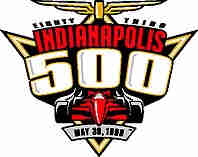

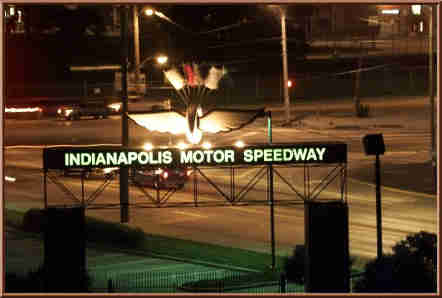
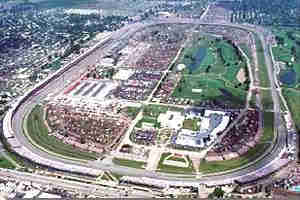 The Indianapolis Motor Speedway Radio Network, which broadcasts the race, is the largest in the world.
The Indianapolis Motor Speedway Radio Network, which broadcasts the race, is the largest in the world.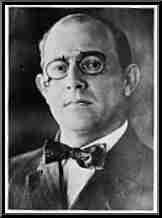 who envisioned a 2.5-mile race course for the fledgling automobile industry. He held the position of president well into the 1920s.
who envisioned a 2.5-mile race course for the fledgling automobile industry. He held the position of president well into the 1920s.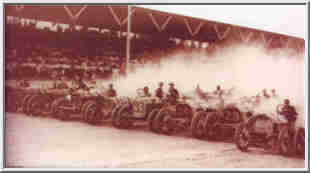 The races began again in late May 1910 and were much safer.
The races began again in late May 1910 and were much safer. formerly the Brickyard Crossing Championship, awarded a purse of $1 million in 1999.
formerly the Brickyard Crossing Championship, awarded a purse of $1 million in 1999. Renowned golf course architect Pete Dye designed the 18-hole, par 72 championship course.
Renowned golf course architect Pete Dye designed the 18-hole, par 72 championship course.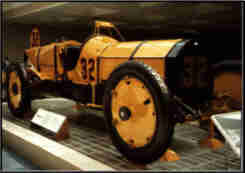 The first Indianapolis 500 in 1911 marked the first long-distance auto race on a closed course or track.
The first Indianapolis 500 in 1911 marked the first long-distance auto race on a closed course or track.
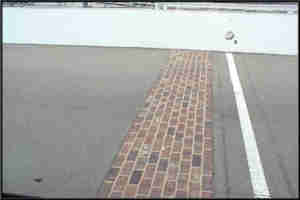 Every area but the main straight was paved by asphalt by the late 1940's; main straight was completely paved following the race in 1961.
Every area but the main straight was paved by asphalt by the late 1940's; main straight was completely paved following the race in 1961.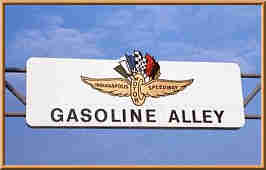 Race pedal-powered Indy Cars on a miniature version of the famed 2.5-mile oval.
Race pedal-powered Indy Cars on a miniature version of the famed 2.5-mile oval.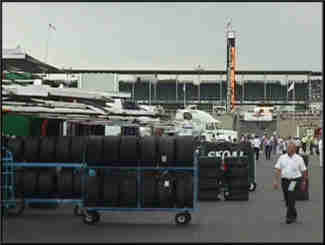 Carburetion Day is held the Thursday before the Race. Carburetion Day is the last day of practice before the race.
Carburetion Day is held the Thursday before the Race. Carburetion Day is the last day of practice before the race.
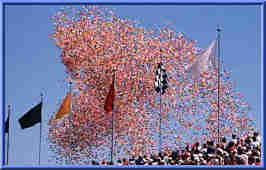
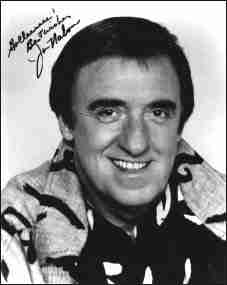 He sings this about 10 minutes before the "green flag" drops.
He sings this about 10 minutes before the "green flag" drops.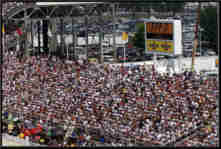
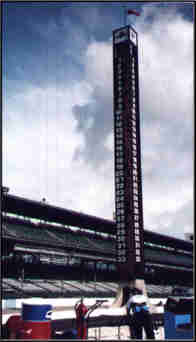 An Indianapolis 500 tradition dating back to 1911 are the pace cars
An Indianapolis 500 tradition dating back to 1911 are the pace cars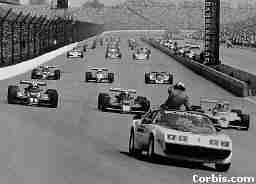 always awarded to the winner at the Monday night's victory banquet.
always awarded to the winner at the Monday night's victory banquet.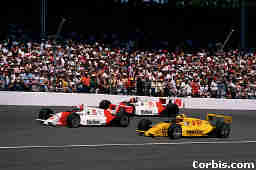 There are approximately 13,200 feet in 2.5 miles, leaving room for 33 cars.
There are approximately 13,200 feet in 2.5 miles, leaving room for 33 cars.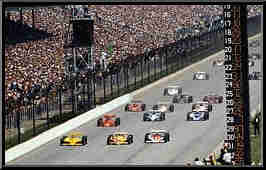 Officials had designated one car for every 400 feet of track.
Officials had designated one car for every 400 feet of track.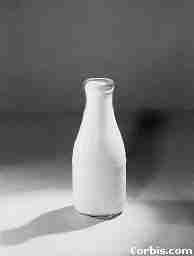 the winner of the 1936 Race was photographed drinking his favorite beverage, buttermilk, after his victory.
the winner of the 1936 Race was photographed drinking his favorite beverage, buttermilk, after his victory.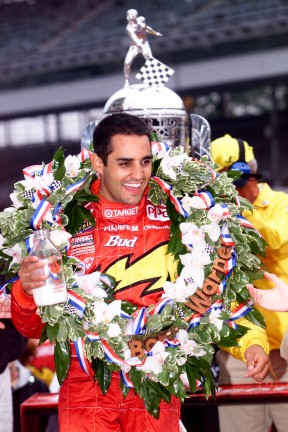 Along with the victor's greenery and flower laden wreath, the chilled milk, now anonymous Grade A whole, is presented in an old-fashioned glass quart bottle for the ceremonial swig.
Along with the victor's greenery and flower laden wreath, the chilled milk, now anonymous Grade A whole, is presented in an old-fashioned glass quart bottle for the ceremonial swig.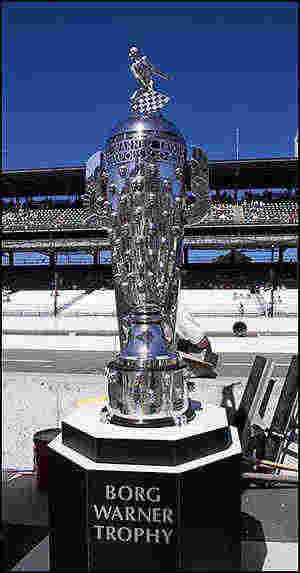
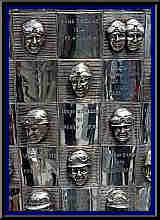
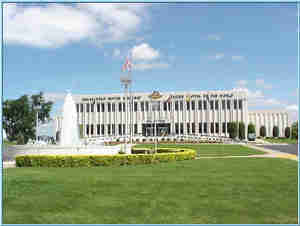 The original four-foot-tall trophy contains bas-reliefs of the 58 winners' faces. It is housed in the IMS Museum, leaving the premises only for race festivities and ceremonies.
The original four-foot-tall trophy contains bas-reliefs of the 58 winners' faces. It is housed in the IMS Museum, leaving the premises only for race festivities and ceremonies.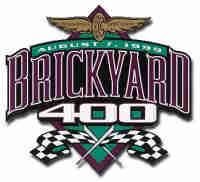
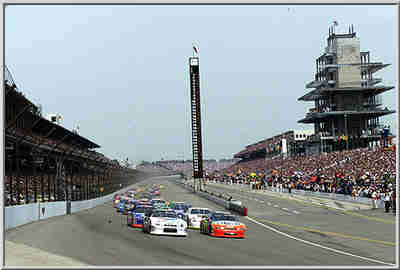
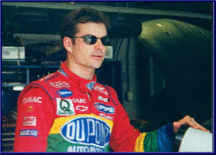

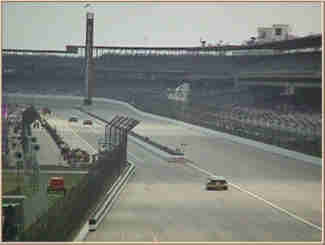

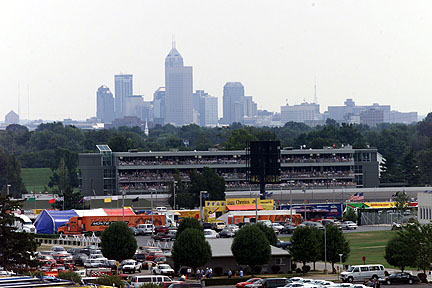
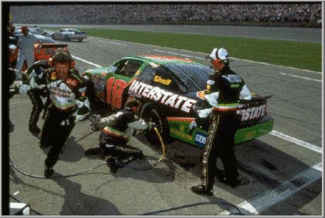
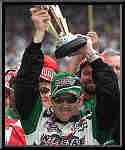

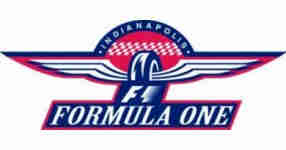
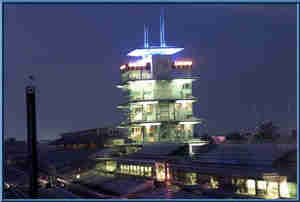
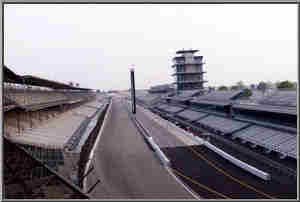


 "Whew!! that was a LOT of racing! We better gas up. Time to head out and check into some more fun state sites!!"
"Whew!! that was a LOT of racing! We better gas up. Time to head out and check into some more fun state sites!!"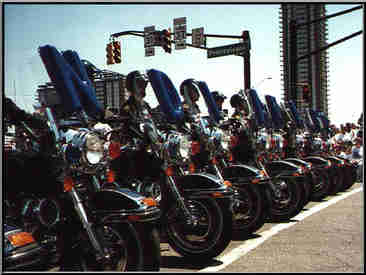
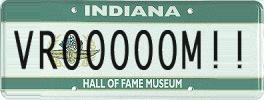
 "I Get Around"
"I Get Around"